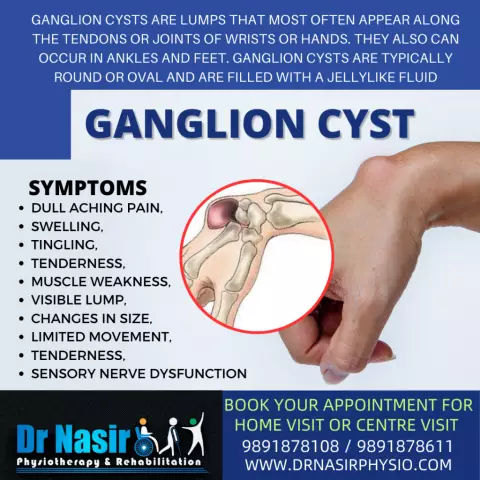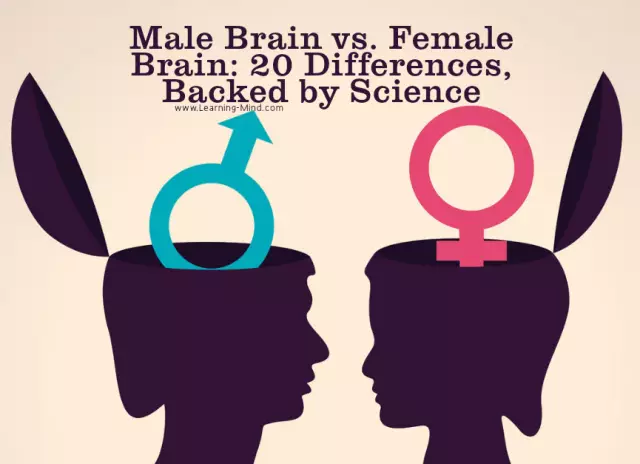- Author Rachel Wainwright [email protected].
- Public 2023-12-15 07:39.
- Last modified 2025-11-02 20:14.
Cerebral hemorrhage
The content of the article:
- Causes of cerebral hemorrhage and risk factors
- Forms
- Stages
- Brain hemorrhage symptoms
- Diagnostics
- Brain hemorrhage treatment
- Complications and consequences of cerebral hemorrhage
- Forecast
- Prevention
Cerebral hemorrhage, or hemorrhagic stroke (from Latin insultus - blow) is the most severe type of cerebral circulation disorders resulting from the rupture of pathologically altered vessels under the influence of high blood pressure.

Source: doctor-neurologist.ru
A hemorrhagic stroke begins suddenly, sometimes headache, dizziness, flushing of the face, vision of objects in red light can be the harbingers of impending cerebral hemorrhage. More often it happens during the day, at the peak of physical or emotional activity, during anxiety, with overwork. Hemorrhagic stroke usually affects people 45-60 years of age, who have a history of causative factors.
Thinned vessel walls easily rupture with massive breakthrough of blood. Blood pushes the brain tissue apart and fills the resulting cavity, forming an intracerebral hematoma (blood tumor), which puts pressure on the surrounding tissues, causes compression of the brain stem and damage to vital centers.
There are frequent cerebral hemorrhages in newborns, which occur during difficult and traumatic childbirth. The most common localization of such hemorrhages is the cerebral hemispheres and the posterior cranial fossa. With a history of cerebral hemorrhage in newborns, the following facts are usually noted:
- first childbirth with a total duration of the period of contractions and expulsion of 2-3 hours or less;
- difficult labor that requires the use of high forceps;
- large fetus with relatively small and rigid birth canal.
Hemorrhagic strokes account for 15-20% in the structure of diseases associated with cerebrovascular accidents. They occur with a frequency of 15-35 cases per 100,000 population, and this figure is constantly growing.
Causes of cerebral hemorrhage and risk factors
The causes of cerebral hemorrhages can be factors that change the thickness and permeability of the vascular walls, as well as the rheological properties of blood.
The most common ones are:
- hypertension in combination with atherosclerotic lesions of the arteries of the brain;
- arterial hypertension;
- congenital vascular malformations of the brain (angiomas, cerebral aneurysms);
- cerebral atherosclerosis;
- blood diseases (polycytenia, leukemia, etc.);
- intoxication, accompanied by hemorrhagic diathesis (uremia, sepsis);
- blood clotting disorders (hemophilia, overdose of thrombolytics).
Risk factors include:
- a family history of hemorrhagic strokes;
- hypertension, angina pectoris, dyscirculatory encephalopathy in history;
- diabetes;
- abdominal obesity;
- tendency to microthrombosis;
- smoking, alcohol abuse;
- sedentary lifestyle;
- stress instability.
Forms
Depending on the localization, intracerebral hemorrhages are divided into the following types:
- parenchymal (intracerebral) - hemorrhages in the cerebral hemispheres or in the structures of the posterior cranial fossa (cerebellum and brain stem);
- ventricular - hemorrhages in the ventricles of the brain;
- shell - bleeding in the brain intermeningeal space;
- combined - simultaneously affecting the brain parenchyma, membranes and / or ventricles.

Membrane hemorrhages, in turn, are divided into:
- subarachnoid;
- epidural;
- subdural.
Combined hemorrhages are divided into:
- subarachnoid-parenchymal;
- parenchymal-subarachnoid;
- parenchymal ventricular.
Stages
During the course of the disease, the following stages are distinguished:
- The most acute period is the first 5 days.
- The acute period is 6-14 days.
- The early recovery period is from 3 weeks to 6 months.
- The late recovery period is from 6 months to 2 years.
- The period of persistent residual effects is over 2 years.
Brain hemorrhage symptoms
The clinical picture of cerebral hemorrhage consists of cerebral and focal symptoms.
Cerebral symptoms of cerebral hemorrhage:
- intense headache;
- nausea, vomiting, which may be reusable;
- high blood pressure;
- rapid, labored, hoarse breathing;
- slow, tense pulse;
- profuse sweating (hyperhidrosis);
- violation of coordination of movements, orientation in time and space;
- hyperthermia up to 41 ° C;
- pulsation of blood vessels in the neck;
- acrocyanosis (purple-bluish skin color);
- urinary retention or involuntary urination;
- paralysis (hemiplegia) or weakening of the muscles of one side of the body of one half of the body (hemiparesis);
- articulation disorders;
- cognitive impairment;
- disorders of consciousness (from stunning to deep atonic coma).
In the initial phase of a stroke, a coma may develop, which is characterized by a severe disorder of consciousness and impaired cardiac activity and breathing, loss of all reflexes. The patient lies on his back, the angle of the mouth is lowered, the cheek is puffed out on the side of the paralysis (sail symptom), all muscles are relaxed. In this case, hemiplegia is observed on the side opposite to the lesion focus. Usually, disorders are more pronounced in the hands than in the legs.
Focal symptoms are usually combined with cerebral symptoms. The severity and nature of the manifestation of focal symptoms depends on the localization of the hemorrhage, the size of the hemorrhagic focus, the type of vascular pathology. Symptoms include:
- loss of pupil response to light;
- a sharp drop in visual acuity, circles and "flies" before the eyes;
- extinction of deep reflexes;
- growing depression of respiration and hemodynamics;
- seizures;
- pathological foot symptoms;
- anosognosia;
- violation of the body scheme and right-left orientation;
- ataxia;
- miosis.
The most severe are the first two to three weeks after a cerebral hemorrhage. The severity of the condition in this period is due to the formation of a hematoma and progressive cerebral edema. By the end of the first month, the cerebral symptoms regress, the more pronounced are those caused by focal lesions, on which the further course of the disease, complications and consequences of cerebral hemorrhage depend.
Diagnostics
Diagnostics is not difficult in the case of an acute onset of the disease, the appearance of impaired consciousness against the background of high blood pressure and the development of various focal symptoms. If the cerebral hemorrhage begins gradually and develops without disturbance of consciousness, then a comprehensive study is carried out, which includes taking anamnesis, clinical examination and physical examination - to determine possible causative factors, the speed and sequence of symptoms. To assess the severity of neurological symptoms and dysfunctions of organs and systems, specialized point scales are used.
Laboratory examination includes general clinical analyzes, biochemical blood tests, and a comprehensive analysis of blood clotting parameters. Relative lymphopenia, leukocytosis, hyperglycemia, decreased viscosity and coagulating properties are found in the blood.

Source: botkin.pro
Instrumental diagnostics:
- computed and magnetic resonance imaging - detect foci of increased density of the brain parenchyma, determine the size and localization of intracerebral hematoma;
- echoencephaloscopy - determine the displacement of the median structures in the direction opposite to the focus;
- angiography - it can be used to identify aneurysm, displacement of intracerebral vessels, to determine the avascular zones;
- lumbar puncture (prescribed for the diagnosis of subarachnoid hemorrhage) - erythrocytes are found in the cerebrospinal fluid;
- ophthalmoscopy - signs of damage to the retina of the eye (retinal hemorrhage, narrowing and displacement of the retinal veins) are revealed.
Brain hemorrhage treatment
Patients with suspected hemorrhagic stroke are subject to emergency hospitalization. Their transportation is carried out with a raised head end of the body. It is necessary to start therapy in the first 3-6 hours after the development of the disease.
Therapy for cerebral hemorrhage involves resuscitation (undifferentiated therapy) and differential treatment.
Principles of undifferentiated therapy:
- treatment of respiratory failure - active oxygen therapy, removal of mucus from the airways, tracheal intubation and connection of a ventilator in case of signs of respiratory failure. With concomitant pulmonary edema - inhalation of oxygen with ethyl alcohol vapor;
- treatment of cardiovascular disorders, blood pressure control - the use of beta-blockers, calcium channel blockers, diuretics, ACE inhibitors, cardiotonic drugs, corticosteroids;
- normalization of water-electrolyte balance and acid-base balance, blood osmolarity in patients in coma - administration of antihypertensive drugs or vasopressors, saline solutions;
- fight against cerebral edema - corticosteroids, osmotic diuretics;
- correction of hyperthermia, vegetative disorders - antipyretics, antipsychotics, regulation of intestinal activity;
- improvement of cerebral metabolism - nootropic drugs.

The main directions of differentiated therapy:
- elimination of cerebral edema;
- lowering blood pressure with a significant increase;
- prevention and treatment of spasm of cerebral vessels;
- fight against hypoxia and disorders of brain metabolism;
- an increase in the coagulating properties of blood and a decrease in the permeability of the vascular wall;
- normalization of vegetative functions;
- prevention of complications.
Surgical treatment of hemorrhage is carried out with a hematoma volume of up to 100 ml and its accessible location. With subarachnoid hemorrhage from an aneurysm, embolization and ballooning of arteries are performed during the first day.
In the recovery period, nootropic drugs, massage, physiotherapy procedures, and physiotherapy exercises are prescribed.
Complications and consequences of cerebral hemorrhage
Cerebral hemorrhage can lead to cerebral edema, breakthrough of blood into the ventricles of the brain with the development of hemocephalus (tamponade of the ventricles) and acute obstructive hydrocephalus, blood penetration into the subarachnoid space. In addition, cerebral hemorrhages may be accompanied by the development of disseminated intravascular coagulation syndrome, which, in turn, leads to local and widespread disturbances of microcirculation in the brain and other organs.
Forecast
A cerebral hemorrhage carries a high risk of death (within the first month after hemorrhage, mortality is 30-60%) and severe irreversible consequences, up to disability (in 60% of patients). In addition, hemorrhagic stroke often occurs repeatedly.
Death occurs in connection with the breakthrough of blood into the ventricles of the brain or damage to vital stem centers, which leads to cerebral edema.
With a favorable course of the disease, patients come out of a coma, consciousness gradually resumes, reflexes return, cerebral symptoms regress, movements, speech, sensitivity gradually resume. The success of restoring impaired functions depends not only on the localization of the focus and the severity of the condition, but also on how competently and carefully the rehabilitation measures are carried out.
Prevention
Prevention of cerebral hemorrhage includes, first of all, the elimination of those diseases that can lead to it - pathologies of cerebral vessels and hypertension.

Source: golovnayabol.com
Other preventive measures include:
- control of blood cholesterol levels;
- quitting smoking, alcohol abuse;
- maintaining a normal body weight;
- healthy food.
YouTube video related to the article:

Anna Kozlova Medical journalist About the author
Education: Rostov State Medical University, specialty "General Medicine".
The information is generalized and provided for informational purposes only. At the first sign of illness, see your doctor. Self-medication is hazardous to health!






